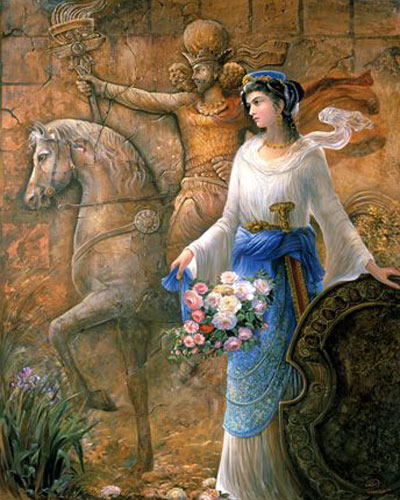March 17, 2017

During the Achaemenid Dynasty (550-330 BCE*), provincial leaders journeyed to Persepolis, the cultural and diplomatic capital of ancient Iran, to join in the grand festival and to offer homage to their monarch. The Achaemenian kings welcomed the new year, and the advent of spring, with lavish court receptions and exchanges of gifts.
The honor paid to the kings at the Now Ruz ceremonies is recorded in intricate friezes that can still be seen on the walls of the ruins at Persepolis.
The friezes display the vastness of the Persian Empire of that era. They show Ethiopians offering a giraffe, Somalis presenting a goat, Assyrians a water buffalo, and Indians a donkey, to name but a few.
The Zoroastrians, the religious sect that became influential in Iran during the Achaemenid period, avidly practiced Now Ruz rituals. Much of what is celebrated today has roots in that epoch.
During the Sassanian period (226-652 CE*), the sixth and final day of Now Ruz was the climax of Imperial Court festivities. Highlighted by a major reception and the entertainment of court poets and musicians, the celebrations were unrestrained in their splendor.
The Sassanian monarchs extended greetings and offered gifts to their subjects on each of the preceding five days. On the first day, the monarch delivered a message to all of his people, reaffirming his devotion to them. On the second day, he addressed the farmers and the guards of the Zoroastrian fire temples. On the third day, the king greeted the high officials of the empire and the Magis (high priests). The fourth day was devoted to the royal family and close friends, and the fifth to the crown prince and his friends.
——————
* CE for Common Era and BCE for Before the Common Era are new terms being used to de-Christianize the dating system now used largely by non-Christians around the globe. They replace B.C. (Before Christ) and A.D. (Anno Domini, Latin for Year of Our Lord).
